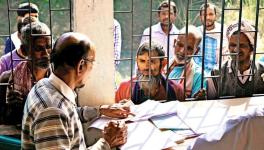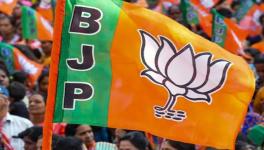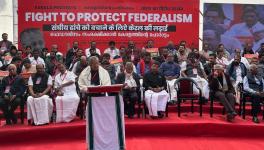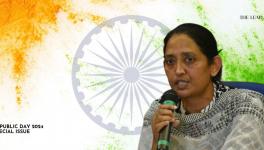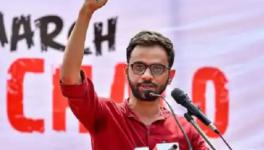SIT was Only ‘SIT’Ting, Not Investigating: Kapil Sibal in Zakia Jafri SLP
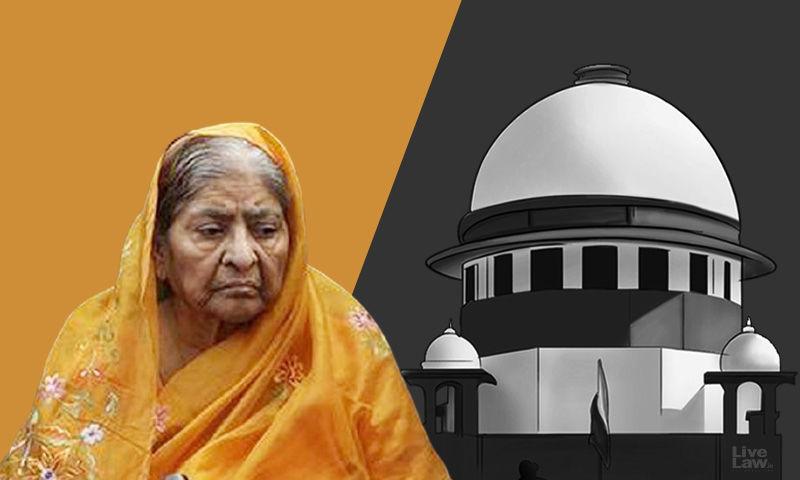
On November 11, the hearing continued in the Zakia Jafri Special Leave Petition (SLP) before the Supreme Court bench of Justices AM Khanwilkar, Dinesh Maheshwari and CT Ravikumar. The petitioners, Zakia Jafri, the widow of slain Congress MP Ahsan Jafri, and Citizens for Justice and Peace (CJP), are being represented by Senior Advocate Mr Kapil Sibal.
Keeping up with the extensive hearing yesterday, Sibal started by requesting the bench to read Article 21 of the Constitution and as he read it aloud, he pointed out that the same has a positive connotation as well that a person can be deprived of life and liberty given that procedure established by law is followed and the person is convicted. In conjunction with that he also read out sections 157 and 172 of Code of Criminal Procedure (CrPC).
While section 157 prescribes the ‘procedure for investigation’, section 172 prescribes ‘diary of proceedings in investigation’. Sibal submitted, “The umbilical cord that connect CrPC to Article 21 is the element of pure and unbiased investigation; without which Article 21 stands to be violated”.
Still referring to the Constitution, he said that Justice as a phenomenon is an element of every right endowed under Chapter III of the Constitution and it subsumes all the fundamental rights.
What does ‘investigation’ mean?
Sibal went into the etymology of the word and stated that investigate comes from the Latin word ‘vestigare’ which means ‘to track/trace’. He elaborated further that to investigate means to find out the footprint of a particular statement of a witness “that is at the heart of an investigation,” adding, “If you just accept the statement as it is, then it is not an investigation.”
This statement was in connection with the closure report submitted by the SIT before the Magistrate Court, where the SIT had readily accepted statements of some accused persons when they said that the confessions they made in the Tehelka sting operation called ‘Operation Kalank’, were part of a script given to them.
“SIT was only ‘SIT’TING’ and not investigating,” he said.
Then, he went on to emphasise the purpose of setting up the SIT was because the National Human Rights Commission (NHRC) did not trust the local police to carry out independent investigation without polluting the purity of the process.
Sibal stated that in a criminal trial, the State is supposed to stand in place of the victims to bring them justice. The investigating agency is duty bound to do anything in its power so that at least the victim is satisfied that the rule of law has been honoured. “If this is violated, the victim is doubly targeted; once by the accused and the next time by the investigating agency,” Sibal submitted.
When Sibal was reading out how proper procedure was not followed during investigation, the bench questioned how is investigation of the crime relevant in proving conspiracy, when inaction of authorities during the riots should be focused on. Sibal responded that the failure to investigate as per procedure is also a part of the conspiracy.
Complicity of police
The protest petition that was filed by the petitioners before the magistrate as well as Gujarat High Court states that no action was recommended against former Commissioner of Police, P. C. Pande who had first withheld evidence, and then only produced it in 2011… both acts which are serious criminal offences under the IPC. The Wireless Message Book of PCR Ahmedabad of February 27, 2002 onwards got made available to the Investigating Agency only after March 15, 2011. Pandey suddenly produced 3,500 pages of scanned messages which were withheld earlier.
The records were destroyed by the government merely 5 days after the SIT was appointed claiming that it was routine procedure. Yet, these records happened to be in possession of Pande in 2011! The question remains if all records were destroyed as part of routine procedure, why and how did these records get left out? And if Pande was in possession of the same, why had he withheld them before?
Pande had even claimed to the SIT that the funeral processions in Ahmedabad were “peaceful” but that was far from the truth as Sibal pointed out has been mentioned in the Protest Petition. In Ramol, near Naroda, a massive funeral rally of over 5,000 to 6,000 mourners took the bodies to Hatkeshwar crematorium. A PCR message was sent out in this regard that the Hindu mob had become violent and had set a vehicle on fire and was indulging in arson on the highway.
There were requests for security to be provided to staff of Sola Civil Hospital where the dead bodies were brought in from Godhra to Ahmedabad in the early hours of February 28, 2002. A message from the State Intelligence Bureau also stated that a funeral procession was allowed to take place at Khedbrahma, a town in Sabarkantha district and that soon afterwards, two Muslims on their way to Khedbrahma were stabbed. Muslim residential colonies, shops and establishments had been identified beforehand and these records were available with the marauding mobs.
After these submissions, Sibal questioned why Pande was not asked by the SIT the reason for making claims that the funeral processions were peaceful when so many violent incidents were an aftermath of these processions in various districts.
An analysis of call records of Pande was also made by the petitioners in their Protest Petition and it was found that on February 28, 2002 he did not make any calls to his officers from his landline and his mobile phone was not used at all by him. He only had calls with accused Jaideep Patel, the VHP leader who was handed over dead bodies of Godhra to be brought to Ahmedabad with an alleged intention to fan communal flames. Pande also claimed that he had no knowledge of the brutal massacres of Naroda Patiya and Gulberg.
Sibal pointed out that the then Police Commissioner of Ahmedabad, PC Pande came up on national TV and told a news channel, Star News, on March 1, 2002, “―These people also, they somehow get carried away by the overall general sentiment. That's the whole trouble. The police are equally influenced by the overall general sentiments.”
The complicity was on the part of the Fire Brigade as well, when calls to the fire brigade went unanswered. The SIT failed to look into why this happened, nor did they interrogate Fire Brigade officials such as Gordhanbhai of Shahpur fire brigade as to why the no one picked up the phone.
“This was not an investigation (by SIT), it was a collaborative exercise,” commented Sibal after pointing out the many discrepancies in the so-called investigation done by the SIT.
It is alleged that it was for such complicity that officers like Pande were given important posts like Additional Director of CBI and this appointment was opposed by many and challenged before the Supreme Court. He was then posted as Additional Director-General of ITBP. Shockingly, later he was also posted as DGP, Gujarat, then briefly removed during 2007 Gujarat Assembly elections as per orders of the Election Commission during which he was posted as Director, Anti-Corruption Bureau and then reinstated as DGP, Gujarat after BJP won the elections in 2008!
On this, Sibal remarked, “The journey from an accused to DGP, Gujarat is quite disconcerting”.
Pande was exonerated by the SIT as it believed his claims that he was at the hospital dealing with dead bodies when the Gulberg massacre took place.
SIT’s contradictory conclusions
In its preliminary report, the SIT had remarked, “It appears that the political affiliation of the advocates did weigh with the government for the appointment of public prosecutors.” The report had also pointed out that a pro-VHP advocate, Mr. Raghuvir Pandya, was appointed as government pleader in the Vadodara district and sessions court in 2002 and he was involved in the Best Bakery case which resulted in acquittal of the accused.
In his comments as Chairman of the SIT, AK Malhotra had said, “It has been found that a few of the past appointees were in fact politically connected, either to the ruling party or organisations sympathetic to it.”
However, the report contradicts itself in concluding, “No specific allegation of professional misconduct on the part of any of the public prosecutors has come to light.”
SIT also found that Gujarat VHP general secretary Mr. Dilip Trivedi was a public prosecutor in Mehsana district between April 2000 and December 2007, with more than a dozen public prosecutors working under him. During Tehelka magazine‘s sting investigation, Operation Kalank, in a conversation with the undercover reporter, Mr. Trivedi had boasted about how he had camped in every district of Gujarat holding meetings with government prosecutors, VHP workers, police officers and defence advocates to ensure bail and acquittals for the Hindu accused. He had proudly told Tehelka that out of a total 74 riot-related cases in Mehsana, only two had resulted in conviction.
Sibal pointed out that this amounted to a clear case of conspiracy.
Protest Petition
Sibal submitted that the Protest Petition dealt with aspects like the manner in which police acted, collaboration of public prosecutors, destruction of records and production of the same after many years lapsed, non-examination of person who admitted to commission of crimes on tape. Yet, these were not acted upon by the SIT despite provision of evidence which was on the SIT’s records and neither did the Magistrate or the Gujarat High Court bother to deal with the petition.
In the Protest Petition, the petitioners even laid bare what steps ought to be taken and in what areas investigation was required to be done in great detail. Sibal said that Magistrate upon reading the Protest Petition could have just taken cognisance of the many offences mentioned therein but it failed to do so.
The hearing in this matter will continue on November 16.
The order may be read here:
Get the latest reports & analysis with people's perspective on Protests, movements & deep analytical videos, discussions of the current affairs in your Telegram app. Subscribe to NewsClick's Telegram channel & get Real-Time updates on stories, as they get published on our website.











